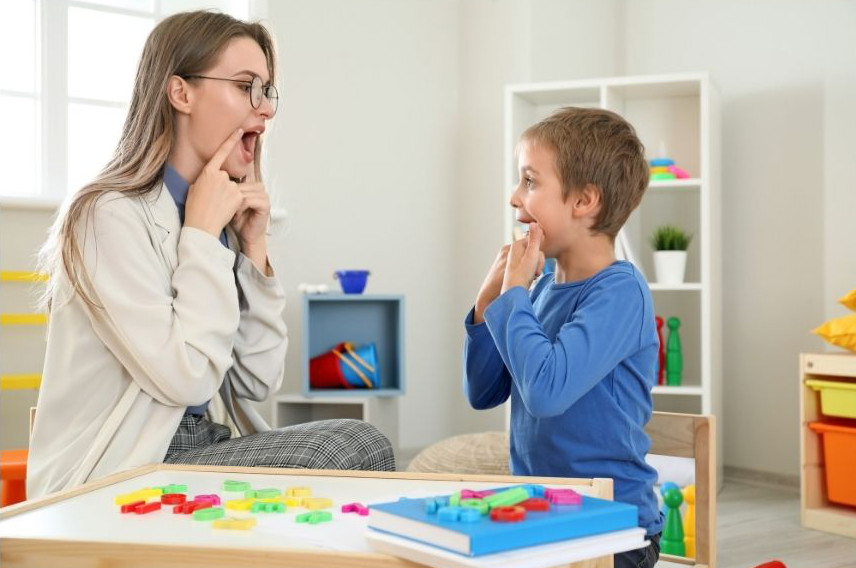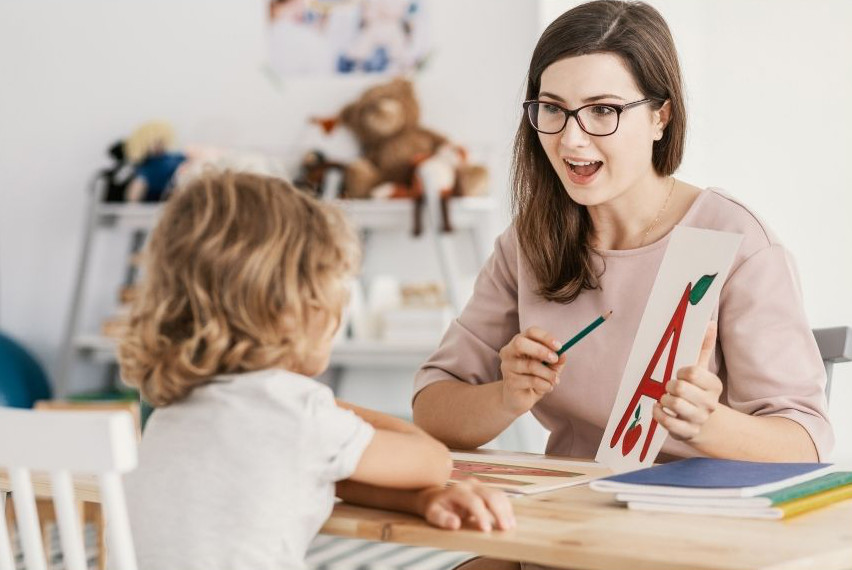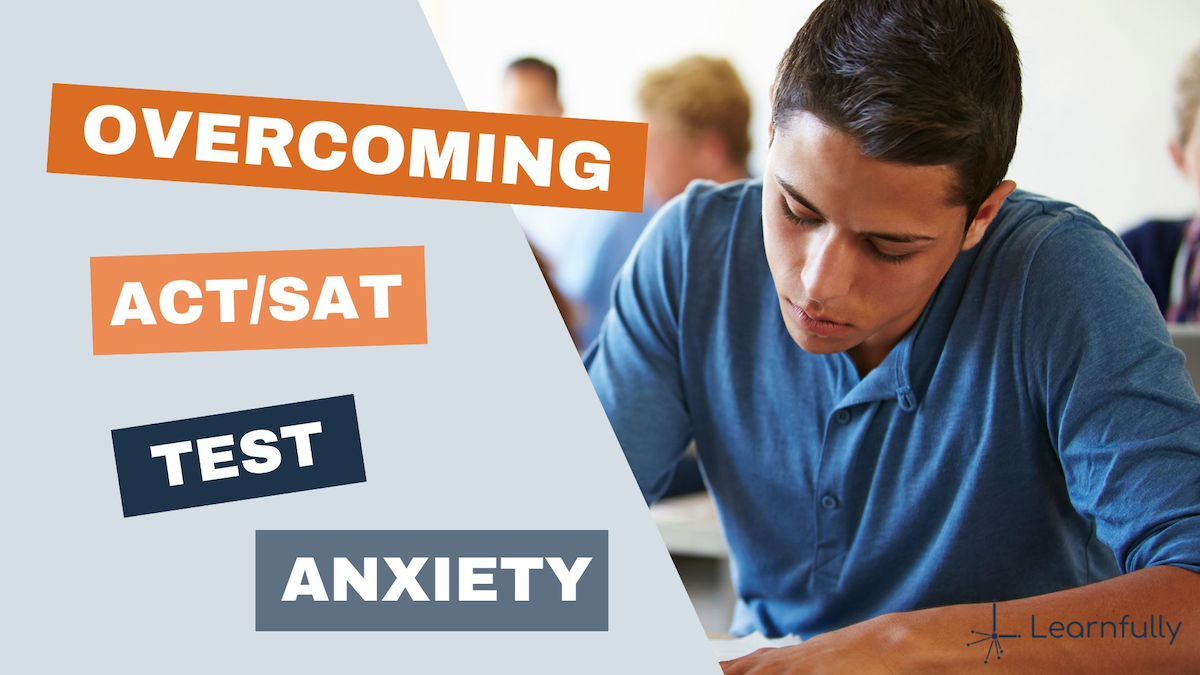As a part of LD Awareness Month, we are spotlighting important aspects of the journey for neurodivergent learners and caregivers. In a previous blog, The Learner Support Ecosystem and Why it’s Important to Have One, we detailed the common roles within the learner’s support ecosystem. In this blog, let’s take a look at the role of the speech therapist. For this, we interviewed Heather Hamilton, a Licensed Speech Language Pathologist.
About Heather Hamilton

Heather Hamilton, M.S., CCC-SLP is the founder of TALK Speech & Language Therapy, LLC in Atlanta, Ga. She received both her undergraduate and graduate degrees from Syracuse University in the field of Speech-Language Pathology. Heather has over 25 years of experience from her time working in Educational, Medical, and Private settings across the United States. With a focus on continuing education and the most current, research-based practices, TALK is an international clinic that sees clients of all ages to focus on communication needs related to speech and language disorders, literacy, and corporate speech challenges.
What is Speech and Language Therapy?
Speech-Language Therapy is so multifaceted! In our clinic, our clients range in age from 1-year to 67-years of age and no two client profiles are exactly the same. At its core, Speech-Language Therapy is individualized treatment that helps an individual meet their full communication potential in order to confidently share and receive information from others through spoken, written, gesture-based, or picture-based language forms. Some children learn language from the exposure they receive in their environments, and some children require direct Speech-Language Intervention to help them master new skills.
Can you help our community with some common terminology?
Receptive Language is the ability to comprehend language at varying levels of complexity. To assess comprehension of language we look at an individual’s ability to show comprehension. For example, we might show a child three toys, hold out our hands, and say CAR. If they point to or grab the car, we know they understood. However, language complexity increases quickly. If you ask a child to, “Point to the car that is not blue,” it requires that they understand the noun CAR, the adjective BLUE, the verb POINT, the negative NOT, and understand the order of the words presented.
Expressive Language involves the ability to utilize specific words (vocabulary/semantics) in the correct combination and form (syntax and morphology). Children are using single words by 1-year and then by 3 to 4 years a child is expected to have a vocabulary of 800 to 1700 words, and be 90% to 100% intelligible during long conversations that utilize compound and complex sentences of 4 to 5 ½ words in length.
Some children and adults are nonverbal and do not communicate with spoken language. When this is the case, Assistive Technology (Augmentative and Alternative Communication or AAC) is utilized to help individuals communicate their thoughts. Low-tech forms of AAC are things like picture symbols, communication boards or writing with a pen and paper. Examples of high-tech forms of AAC include the use of iPads, computers, or devices that generate speech for a user.

Pragmatic Language is the ability to use language in socially appropriate ways across various settings.
Articulation refers to the ability to spontaneously say speech sounds correctly. Some children struggle with the production of only one or two sounds and would be diagnosed with an articulation disorder. Others have difficulty being understood (intelligibility) because they are not able to say many sounds correctly. This might be diagnosed as a Phonological Disorder as they have consistent error patterns. Childhood Apraxia of Speech (CAS) is a motor coordination problem that prevents an individual’s oral structures (i.e., lips, tongue, teeth, jaw) from executing the motor planning steps that the brain tells them to. This results in inconsistent error patterns that can change each time a word is produced. It is important for parents to know that Childhood Apraxia of Speech is different from adult apraxia that results from a stroke or a traumatic brain injury.
Other elements of spoken communication that might be addressed in therapy include Voice Disorders and Stuttering.
Our caregivers would appreciate an understanding of a list of symptoms that may otherwise go unnoticed. What should they look out for in their learners?
Parents and caregivers need to trust their instincts! So often families know that something is not right, but they listen to a pediatrician, family member, or friend and do not seek a professional’s opinion. If you sense that something is not developing as it should, reach out to a professional to get their recommendations. Getting intervention early can make a difference in long-term outcomes.
A few questions parents and caregivers can ask themselves to see if consultation with an SLP might be of benefit:

- Do I feel like something is not quite right with how my child is engaging, speaking, or using language? If so, call a Speech-Language Pathologist (SLP) and ask for a phone consultation. Reputable practices will offer a complimentary call.
- Have I been told by a friend or teacher that my child should see an SLP? If so, there is no harm in seeking out additional information about your child’s communication skill development.
- Is my child struggling to follow directions independently without gestures or help?
- If your child is 2 years of age, can they name some pictures, use simple pronouns (I, me, you) and verbs, and say some routine phrases?
- If your child is 2 ½ years of age can they use 150-350 words, ask simple questions and add some simple modifiers to nouns (e.g. big truck)?
- If your child is 3 years old can they carry on a meaningful conversation, describe actions seen in books and repeat some rhymes?
- Are you noticing that your child says several words incorrectly not because of a speech sound error pattern, but because they seem to have learned the word incorrectly (for example, they say Pucause of Because)? Perceptual errors can be a sign of an underlying phonological processing deficit that suggests a child would benefit from structured phonological awareness training.
- Does my child seem frustrated when trying to communicate? Frustration at any age can be a sign of an underlying communication problem.
What services do you and your therapists provide?
TALK Speech & Language Therapy, LLC provides both in-person and Teletherapy intervention in the areas of speech sound disorders, expressive language, receptive language, pragmatic language & social communication, literacy, written language, voice therapy, and fluency (stuttering). We have the pleasure of seeing an international population and specialize in working with bilingual and multilingual families. Additionally, TALK provides Corporate Speech Therapy services to help clients target accent reduction, cultural communication differences, pragmatic language, and effective communication strategies in the workplace.
Are there any final thoughts you wish to share?
Parents and caregivers should know that speech sound disorders are not just about saying speech sounds correctly. From the time they are toddlers, children are developing the Phonological Awareness skills that will allow them to be successful readers and spellers. Remediation of speech sound production errors, along with structured phonological awareness intervention, can prevent literacy issues down the road.
Finally, everyone should know that Speech-Language Therapy is not just for children. Our practice works with clients of all ages. In recent years more and more adults have sought intervention after gaining a greater understanding of their child’s challenges and recognizing the same struggles have always been an issue for them as well. It is never too late to reach out to a Speech-Language Pathologist for a consultation.











